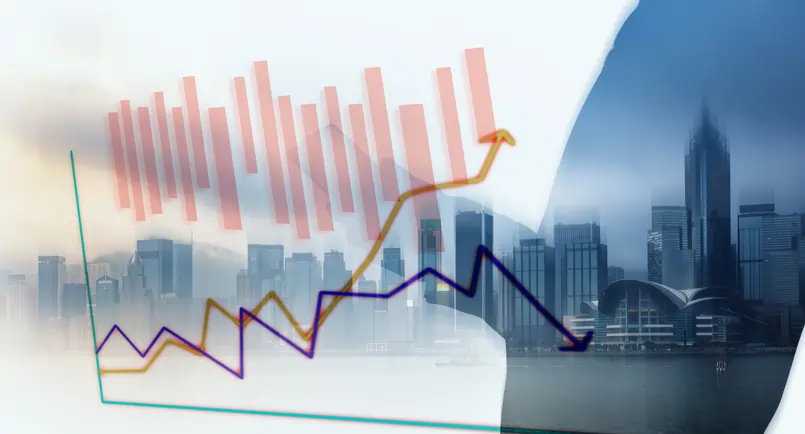
Equity markets rose last week for the third week running. Global equities returned 2.4% in local currency terms and a somewhat smaller 1% in sterling terms, as the pound recovered to $1.24 against a weaker dollar. Small and mid- cap stocks led the rise, with increases of around 4% in the UK and 5% in the US.
To put these latest market gains into some perspective, global equities are now back up to their end-July high in sterling terms but still off 2% in local currency terms. Going back further still, markets are now down some 2% and 7% respectively from their all-time peak at the start of 2022.
Bonds have been a major driver of recent equity moves and last week saw 10-year government bond yields decline a further 0.15-0.2% in both the US and UK, leading to Gilts and Treasuries returning 1-2% in the process. Yields are now down as much as 0.5% from their recent highs.
Central bankers are sticking to the narrative that interest rates will remain higher for longer and a further rise can still not be ruled out. But markets are no longer listening and are now anticipating rates will start to be cut in the second quarter next year, falling by as much as 0.75% in the US, UK and Eurozone by year-end.
A burst of optimism on inflation has been the main factor behind these moves and was given a further boost by last week’s crop of data. The annual rate of core inflation in the US came in a bit lower than expected in October, edging down to 4.0% from 4.1%. Rather more impressively, core prices in the last few months have been rising at an annualised rate of no more than 3% or so.
Even in the UK, where inflation is more entrenched, the headline rate has slowed to 4.8%. Even if it remains significantly above rates of 3.2% in the US and 2.9% in the Eurozone, it has now halved from its high as the Prime Minister is taking care to remind us.
The news on underlying inflation pressures in the UK is less encouraging. Core inflation is still running at 5.7% and wage growth (excluding bonuses) remains a worryingly high 7.7%.
While interest rates will most likely start to be cut in the second half of next year, market expectations are looking decidedly hopeful. It is worth remembering that investors became excessively optimistic about the prospects for Fed easing on several occasions over the last two years, only then to have a rude awakening from the data, the Fed or a combination of the two.
Although inflation has now retreated significantly, it remains well above the central bank targets of 2% and it is still quite uncertain how easy it will be and how long it will take to return inflation to this level. The Fed, ECB and MPC are all currently not expecting this to be achieved until 2025.
Their willingness to cut rates will depend not only on how fast inflation is falling but on how weak the economy is. US Growth powered ahead at an annualised rate of close to 5% in the third quarter. However, it is now slowing and the extent of the slowdown ahead remains far from clear.
There is rather less uncertainty over the UK and Eurozone. GDP was flat in the UK last quarter while it contracted slightly in the Eurozone. The prospect over the coming year in both regions seems to be for the economies to flat-line at best or dip into mild recession at worst.
Of course, in the Autumn Statement on Wednesday, Jeremy Hunt will no doubt present a rather rosier outlook. More importantly, it now looks like he will be able to pull some tax cuts out of the hat. The budget deficit this year has come in lower than expected, giving him some £25bn or so of headroom to meet his fiscal targets.
Talk is now of a cut in income tax rather than inheritance tax, alongside an extension of the current generous business investment allowance. Any give-away, however, is likely to be limited with last-year’s mini-budget fiasco still fresh in the memory. The resulting near-term economic boost should be minimal, but the Chancellor will be hoping the political gains will be rather larger.


